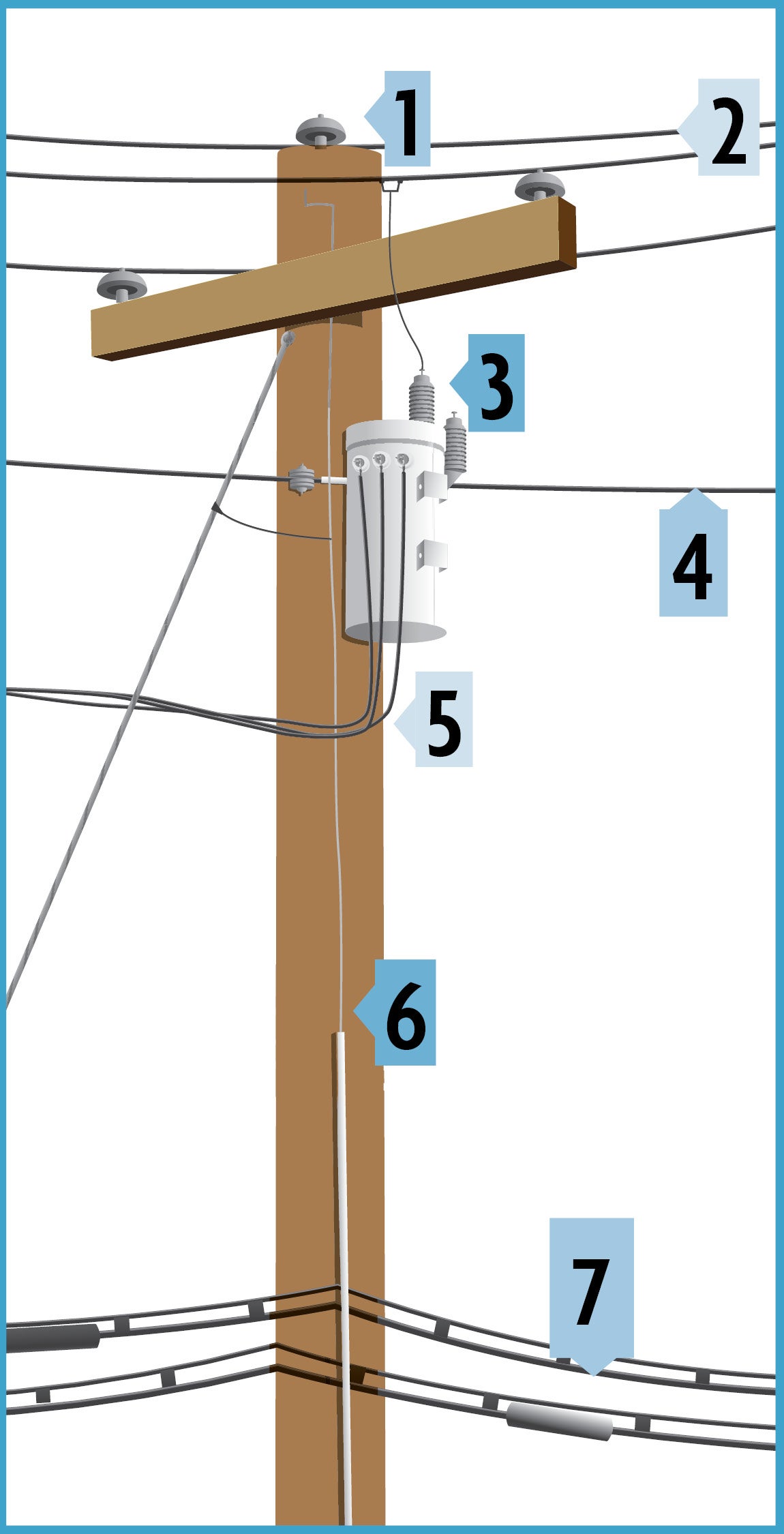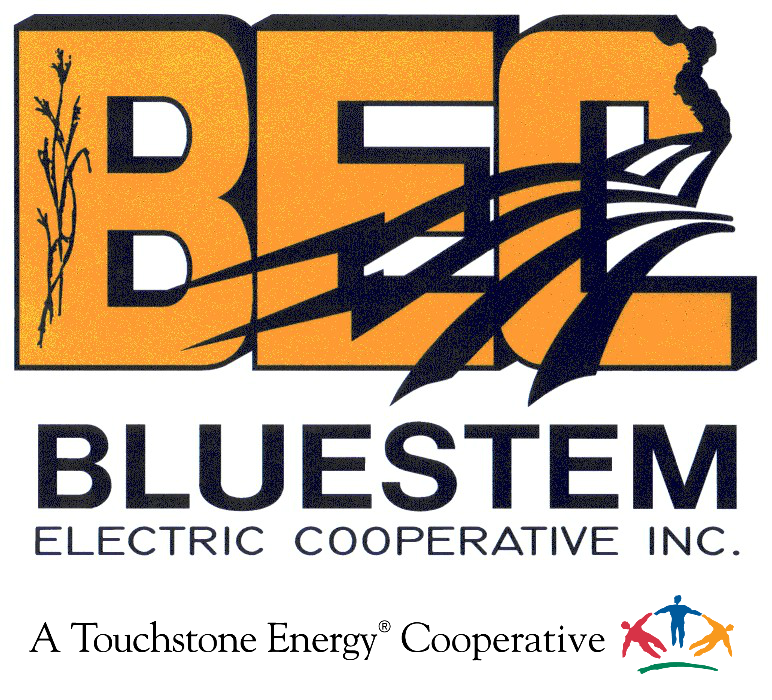
Ever pass an electric utility pole and wonder what all that equipment is for?
This illustration shows the basic equipment found on electric utility poles. The equipment may vary according to location and the service they provide.
1. Insulators — Insulators prevent energized wires from contacting each other or the pole.
2. Primary Wires — Primary wires carry 7,200 volts of electricity from a substation. That voltage is 60 times higher than the voltage that runs through your home’s electrical outlets!
3. Surge Arrestors — These protect the transformer from lightning strikes.
4. Neutral Wire — The neutral wire acts as a line back to the substation and is tied to the ground, balancing the electricity on the system.
5. Secondary Service Drop — Secondary Service Drop carries 120/240 volts of electricity to consumer-members’ homes. It has two “hot” wires from the transformer and a bare “neutral” wire that’s connected to the ground wire.
6. Ground Wire — The ground wire connects to the neutral wire to complete the circuit inside the transformer. It also directs electricity from lightning safely into the earth.
7. Communication Wires — These are typically the lowest wires on the pole. These wires carry telephone, cable and fiber to homes.
